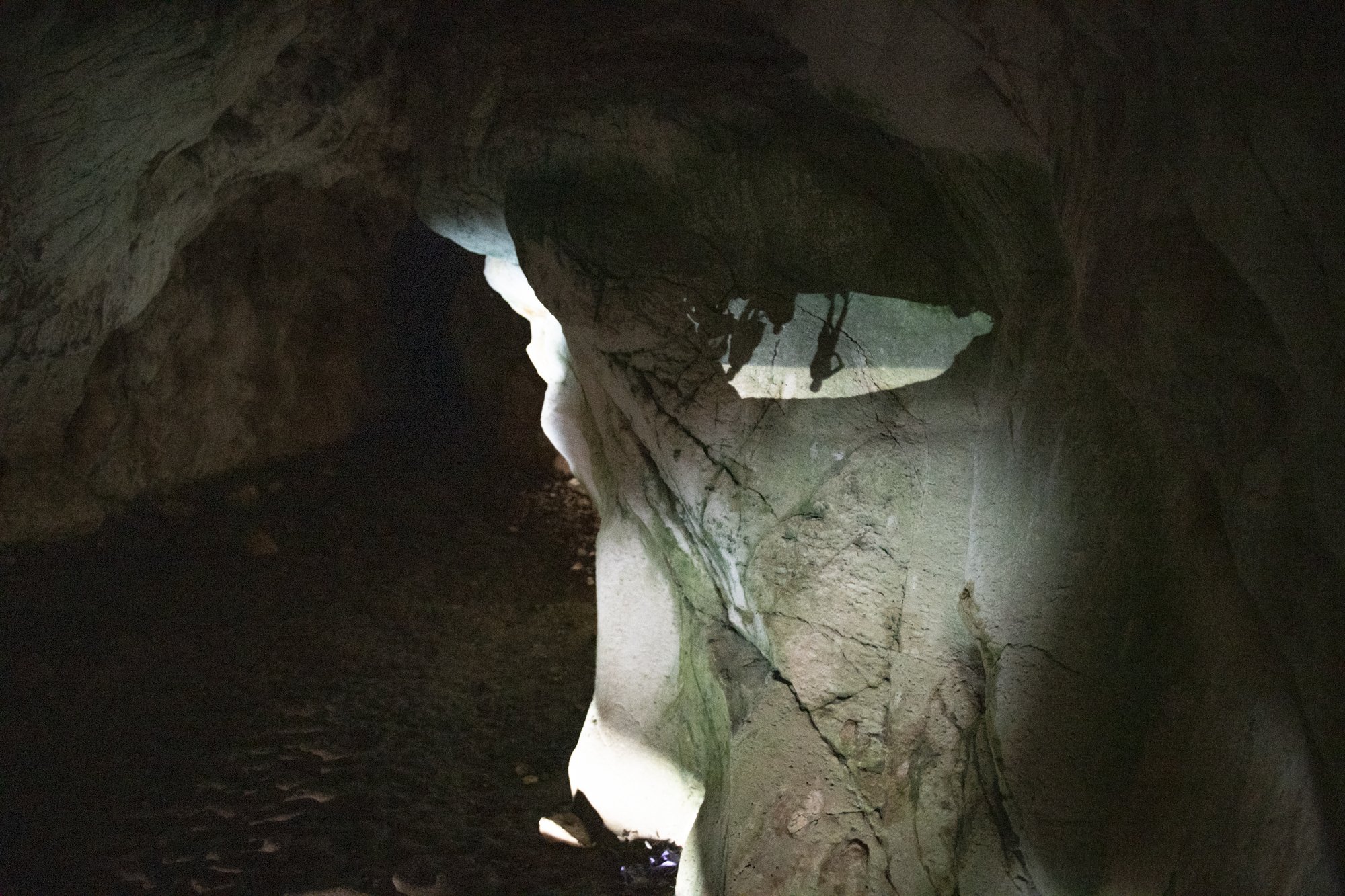
la grotta
I imagine a time before humanity, when a cave, sealed by a rockfall, became a natural camera obscura. Light, entering in the darkness through a small opening, began to project moving images onto the walls—flipped, inverted, yet alive. These silent images, drawn by light itself, predate human vision.
Entering for the first time in the cave, I instinctively felt the weight of time. The walls bear traces of climatic and geological events, like a photographic archive capturing eras in stone. This is why I imagine this cave before the arrival of humans, projecting stories onto its walls—images that might belong not only to human memory but to the memory of the universe itself.
Filmed and directed by Vito Fragione.
the cave that daydreams
Inside the cave, light and shadow transform, challenging our understanding of reality. Using the ancient camera obscura, the cave becomes a natural projection space, where visitors, entering its womb, see their own silhouettes dancing on the rocky walls, dissolving the boundary between self and image, revealing an experience of light and memory.
This project is a return to origins—not only of photography but of vision itself. As a foundation of Western thought, Plato’s Allegory of the Cave provides a conceptual structure for this project. The cave reverses the journey: revelation happens within, where light and shadow redefine reality.
At the dawn of the definitive loss of the real referent associated with the photographic language, in an era where Artificial Intelligence enables the creation of images that no longer require light to exist, my project stands as a tribute to the history of the image, reminding us of the importance of natural light and its revealing potential.
The cave is not just a physical space—it is a womb of memory, where light, shadow, and history converge. (Jung & Bachelard) The moving projections inside La Grotta do not merely capture reality; they reactivate something ancient, something that persists beyond time and re-emerges when the conditions allow. (Warburg & Bergson) Unlike Plato’s prisoners, for whom shadows were the only reality, the projections in this artistic installation function as revelations—offering visions of images that have always existed, waiting to be seen again.
The connection between Plato’s Cave, the Chauvet cave paintings, and contemporary art installations reflects an ongoing investigation into the relationship between perception, memory, and representation. From prehistoric cave paintings, which may have been inspired by natural camera obscuras, to shadows cast by fire in ritual storytelling, and up to today's digital and conceptual art—La Grotta is part of this continuum. The cave becomes an observatory where vision and history intertwine, a place where the past is not only remembered but relived through shadow and light.
Werner Herzog wrote: “There are images inside us that lie dormant, waiting for an external stimulus to awaken them from their twilight.” This project explores precisely this idea: can light awaken what is already within us? Can the artistic journey bring these images back to the surface? Could it be that even in prehistoric caves, the same physical phenomenon at the core of photography created natural camera obscuras, influencing cave paintings based on inverted observations of the external world?
This connection between past and present, between shadow and light, continues to drive my artistic exploration.
The cave daydreams, revealing traces of a collective memory that light brings to the surface. Like an ancestral eye, it sees and remembers, embracing projections that exist on the boundary between reality and imagination. The cave wall—where light and shadow meet—acts as a retina, absorbing fleeting projections of silhouettes against the moving sea, becoming the medium for a timeless narrative. Perhaps, as Herzog suggests, the shadows we observe are not new: they have always been with us, waiting to be awakened.